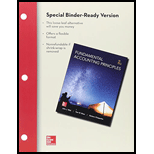
(1)
Introduction:
Cost allocation of
• Cost allocation of Overheads takes place on basis of cost objects identified to enable cost allocation. Overheads refer to costs of operations and comprise of indirect costs in the form of selling and administrative expenses.
• Examples of Overheads are Salaries of administrative staff, rent of office, advertising expenses etc. The costs of the operations are allocated on basis of cost objects. Cost objects are units of cost allocation identified for overhead allocations and cost estimations.
• Examples of Cost objects for Overhead allocation are Number of units produced, number of labor hours worked etc.
Total Cost of Job if overheads are applied at 50% of direct labor cost
(2)
Introduction:
Activity Based Costing
• Activity Based Costing is a method of cost allocation, whereby costs are assigned to activities performed and cost per unit of activity driver is calculated and assigned to units of activities performed.
• Activity drivers could be cost allocation units such as orders, batches, area occupied etc. Activity based costing favors cost allocation on the actual units of activity carried out as opposed to the standard method of overhead application using a blanket rate.
Total Cost of Job if overheads are applied using activity based costing.
(3)
Introduction:
Cost allocation of Overheads
• Cost allocation of Overheads takes place on basis of cost objects identified to enable cost allocation. Overheads refer to costs of operations and comprise of indirect costs in the form of selling and administrative expenses.
• Examples of Overheads are Salaries of administrative staff, rent of office, advertising expenses etc. The costs of the operations are allocated on basis of cost objects. Cost objects are units of cost allocation identified for overhead allocations and cost estimations.
• Examples of Cost objects for Overhead allocation are Number of units produced, number of labor hours worked etc.
Activity Based Costing
• Activity Based Costing is a method of cost allocation, whereby costs are assigned to activities performed and cost per unit of activity driver is calculated and assigned to units of activities performed.
• Activity drivers could be cost allocation units such as orders, batches, area occupied etc. Activity based costing favors cost allocation on the actual units of activity carried out as opposed to the standard method of overhead application using a blanket rate.
Which approach to overhead application results in better representation of costs incurred to undertake Job
Want to see the full answer?
Check out a sample textbook solution
Chapter C Solutions
Loose Leaf for Fundamentals of Accounting Principles and Connect Access Card
- I am looking for the correct answer to this financial accounting problem using valid accounting standards.arrow_forwardCan you help me solve this general accounting question using the correct accounting procedures?arrow_forwardEcho Corporation had accounts receivable of $95,000 at January 1, 2023. At December 31, 2023, accounts receivable was $75,000. Sales for 2023 totaled $650,000. Compute Echo Corporation's 2023 cash receipts from customers.arrow_forward
- O'Keeffe Corporation's trial balance shows Accounts Receivable with a debit balance of $350,000. The company estimates that 3% of receivables will be uncollectible. If the Allowance for Doubtful Accounts has a credit balance of $4,200 before adjustment, what is the required adjusting entry for bad debt expense?arrow_forwardAziz Industries has forecasted sales of $6,200 in April, $7,800 in May, and $9,400 in June. All sales are on credit. The company collects 35% of sales in the month of the sale and the remaining 65% in the following month. What will be the balance in accounts receivable at the beginning of July?arrow_forwardNonearrow_forward

 AccountingAccountingISBN:9781337272094Author:WARREN, Carl S., Reeve, James M., Duchac, Jonathan E.Publisher:Cengage Learning,
AccountingAccountingISBN:9781337272094Author:WARREN, Carl S., Reeve, James M., Duchac, Jonathan E.Publisher:Cengage Learning, Accounting Information SystemsAccountingISBN:9781337619202Author:Hall, James A.Publisher:Cengage Learning,
Accounting Information SystemsAccountingISBN:9781337619202Author:Hall, James A.Publisher:Cengage Learning, Horngren's Cost Accounting: A Managerial Emphasis...AccountingISBN:9780134475585Author:Srikant M. Datar, Madhav V. RajanPublisher:PEARSON
Horngren's Cost Accounting: A Managerial Emphasis...AccountingISBN:9780134475585Author:Srikant M. Datar, Madhav V. RajanPublisher:PEARSON Intermediate AccountingAccountingISBN:9781259722660Author:J. David Spiceland, Mark W. Nelson, Wayne M ThomasPublisher:McGraw-Hill Education
Intermediate AccountingAccountingISBN:9781259722660Author:J. David Spiceland, Mark W. Nelson, Wayne M ThomasPublisher:McGraw-Hill Education Financial and Managerial AccountingAccountingISBN:9781259726705Author:John J Wild, Ken W. Shaw, Barbara Chiappetta Fundamental Accounting PrinciplesPublisher:McGraw-Hill Education
Financial and Managerial AccountingAccountingISBN:9781259726705Author:John J Wild, Ken W. Shaw, Barbara Chiappetta Fundamental Accounting PrinciplesPublisher:McGraw-Hill Education





